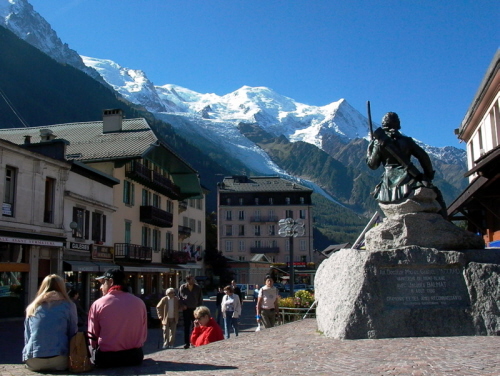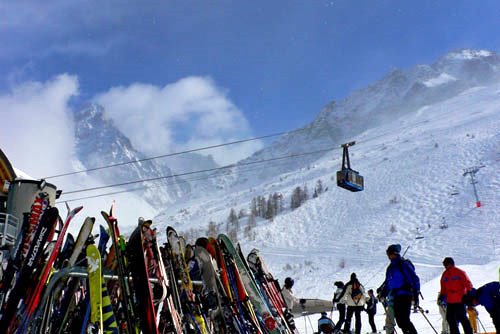

 |
The Tenth International Conference on Networking ICNS 2014 April 20 - 24, 2014 - Chamonix, France |
|
 |
 |
 |
|
|||||||||||
| Details: |
ISSN: 2308-4006 |
|
||||||||||||||||||
All tracks/topics are open to both research and industry contributions.
Tracks:
ENCOT: Emerging Network Communications and Technologies
Access and home networks; Ad hoc networks; Application-specific networks (e.g. SANs); Autonomic Networks; Delay-tolerant Networking; Distributed communications systems & applications; Energy-efficient networking; High-speed & optical networks; Mobile networking and systems; MPLS-VPN & IPSec-VPN networks; Multimedia and multicast communications; Networking Communication theory; Network modeling & simulation; Network monitoring techniques; Network security; Next Generation Networks (NGN); Overlay networks; Peer-to-peer networking; Programmable and Active Networks; Sensor networks; Switching and routing; Wireless and Satellite Networks
COMAN: Network Control and Management
Network, control and service architectures; Network signaling, pricing and billing; Network middleware; Network management, monitoring and control; Network resource scheduling; Networks policy-based management; Management of autonomic networks and systems; Telecommunication networks architectures; On-demand networks, utility computing architectures; Applications and case studies
SERVI: Multi-technology service deployment and assurance
Service-oriented architectures; Service definition, creation, bundling, deployment; Service reuse, composition and service feature interaction; Service orchestration and federation; Inter-provider service dependency; Intra-provider service dependency and service interaction; Service middleware and service development platforms (SDPs); Service open architecture (SOA); Profiling and service adaptation; Service privacy and security; Quality of service, service level agreement [QoS/SLA]; Service agreement violations; Mobile services and service migration; Reliability, availability, serviceability [RAS]; Service performance metrics; Traffic engineering, metering, monitoring; Voice over IP services; IP Multimedia services; Real-time/not-real-rime services; real-time services over IP/IPv6; Service performance evaluation, tools, simulation
NGNUS: Next Generation Networks and Ubiquitous Services
Methodologies, development support, and tools for NGN and converging services; NGN and convergence of ubiquitous services; NGN frameworks, architectures, and concepts; NGN technologies and mechanisms; QoS/SLA, traffic in NGN; NGN transport/service layered capabilities and operations; NGN concepts for active, ad hoc, mobile, and wireless networks; 3G and 4G Mobile networks; Fixed/mobile networks integration and internetworking; Services and service differentiation over NGN; Managing ubiquitous services in NGN; NGN interworking, non-NGN interoperability, migration; Regulatory services in NGN and standard activities; NGN device instrumentation; NGN policy-based control; Next Generation Internet
MPQSI: Multi Provider QoS/SLA Internetworking
Architectures, frameworks, mechanisms for admission control and measurement; QoS in multi-provider and multi-technology networks; Service classes and multi-provider service class discovery; Service level agreement and service assurance in multi-provider environments; Carrier-class end-to-end SLA and QoS monitoring and management; Multi provider accounting/billing/cost sharing; Management, monitoring, and measurements in multi-provider networks; End-to-end QoS/SLA advanced network services in multi-provider networks; End-to-end QoS/SLA for multimedia applications and services in multi-provider networks; Security issues in multi-service provider networks; Business models for multi-providers under QoS/SLA constraints; Standards and fora activities
SDN: Software Defined Networking
SDN architectures; Openflow protocols; SDN switches and routers; SDN controllers; Network operating systems; SDN scalability; Virtualization; Flow based operation; Distributed Controllers; State distribution in SDN control; Fault tolerance in SDN; Secure and dependable SDN; Openflow vulnerabilities; Software defined Internet architectures;Scaling virtualized functions; Traffic engineering with SDN; Abstractions for SDN; Network programming languages; Information centric networking and SDN; SDN in cloud computing; SDN applications; SDN in wireless environment; Controller performance evaluations; Mobility solutions
GRIDNS: Grid Networks and Services
GRID theory, frameworks, methodologies, architecture, ontology; GRID infrastructure and technologies; GRID middleware; GRID protocols and networking; GRID computing, utility computing, autonomic computing, metacomputing; Programmable GRID; Data GRID; Context ontology and management in GRIDs; Distributed decisions in GRID networks; GRID services and applications; Virtualization, modeling, and metadata in GRID; Resource management, scheduling, and scalability in GRID; GRID monitoring, control, and management; Traffic and load balancing in GRID; User profiles and priorities in GRID; Performance and security in GRID systems; Fault tolerance, resilience, survivability, robustness in GRID; QoS/SLA in GRID networks; GRID fora, standards, development, evolution; GRID case studies, validation testbeds, prototypes, and lessons learned
EDNA: Emergency Services and Disaster Recovery of Networks and Applications
Theory on disaster-tolerant robust networks; Recovery by disruption resource procedures; Security issues with emergency services and disaster recovery; Networks resiliency methods; Formal methods for safety-critical systems; Networks emergency services; Public safety, reliable emergency communications, and applications; Response to the networks emergency services; Disaster prevention and recovery; Fighting mechanisms for disaster of networks and applications; Notifications and recovery in various network technologies; Customer protection and serviceability perception; Cost models and business impact; Cultural and legal aspects; Future advanced network development and evolution; Standards and guidelines; Lawful interception and defense strategies;
IPv6DFI: Deploying the Future Infrastructure
IP Upgrade - An Engineering Exercise or a Necessity?; Worldwide IPv6 Adoption - Trends and Policies; National Strategies in Stimulating IPv6 Adoption; IPv6 in Government Infrastructures - Specific Requirements; IPv6 Infrastructures for Emergency Response and Law Enforcement - MetroNet6; Communications Equipment Certification for IPv6 Support; IPv6 in Broadband Networks; IPv6 Programs, from Research to Knowledge Dissemination; IPv6 Technology - Practical Information; Advanced Topics and Latest Developments in IPv6; IPv6 Deployment Experiences and Case Studies; IPv6 Enabled Applications and Devices
IPDy: Internet Packet Dynamics
Measurement of stream characteristics (reordering, delay, losses, jitter, etc.);
Measurement and estimation of network characteristics;
Tools, metrics and benchmarks;
End-to-end packet dynamics;
Timing aspects in packet dynamics;
Impact of load balancing, parallelism within nodes, etc. on packet dynamics;
QoS mechanisms and their impact on packet dynamics;
Models (e.g., relating protocols, resources and architectures to packet dynamics);
Mitigation of adverse effects of reordering, jitter, etc.;
Traffic engineering;
Impact of packet dynamics on application performance
GOBS: GRID over Optical Burst Switching Networks
Terabit burst switching; Burst assembly for IP DiffServ over optical burst switching networks; Optical network infrastructure for Grid; Synchronous stream optical burst switching; Optical burst switching based GRID architecture; Reliable optical burst switching for next-generation Grid networks; Throughput for Grid optical burst switching Grid networks; Resiliency paths over the optical Grid networks; Consumer oriented Grids using optical burst switching; Protocols for optical burst switched Grid networks; Hybrid optical switching for data-intensive media Grid; Anycast routing in optical burst switched Grid networks; Optical burst switching for IP-over-WDM/DWDM; Customizable Grid-to-optical network; Ultra high capacity optical networks; Hybrid optical burst/circuit switched for Grid-enabled optical networks; Job scheduling in optical burst switching Grid networks; Architecture and middleware for Grid-Over-OBS
LEARN: Learning Methodologies and Platforms
New learning methodologies; Blended learning; Accessibility in Learning; Online laboratories; Virtual laboratories; Remote laboratories; Learning strategies to enhance online courses; Learning Content adaptation for blended learning; Learning platforms and their compatibility with cisco.netacad.net

